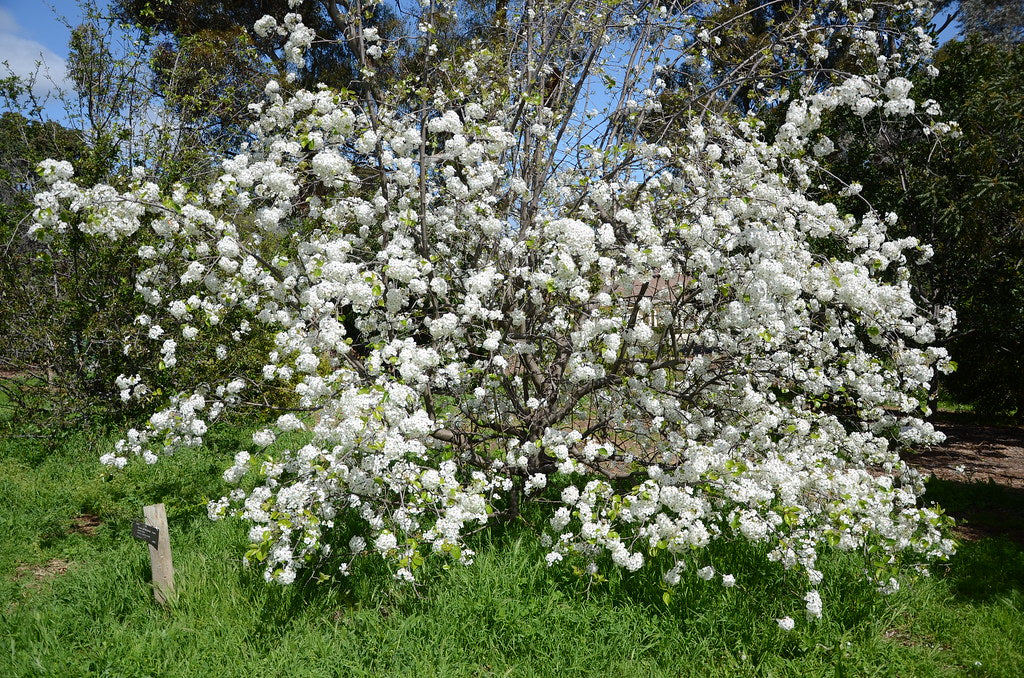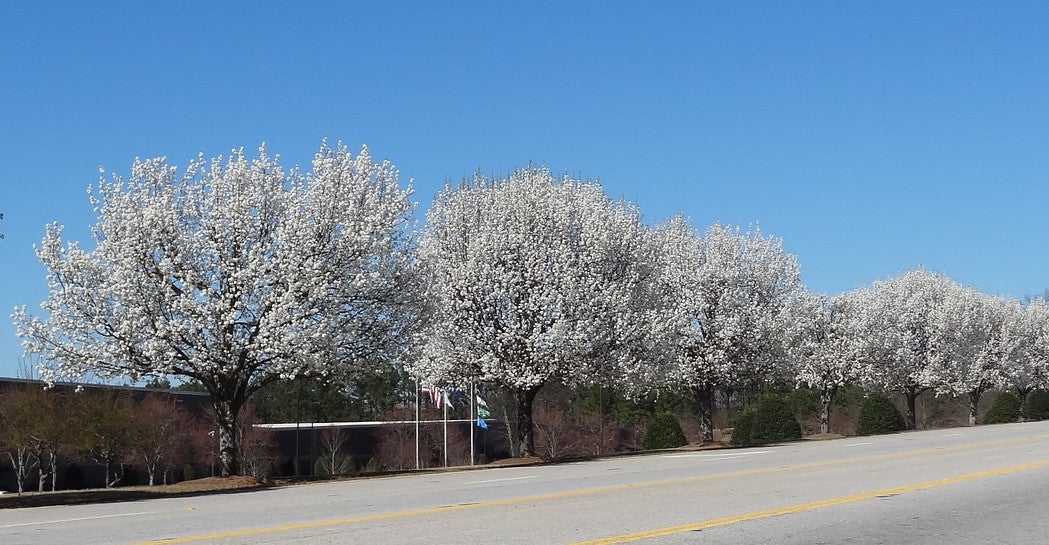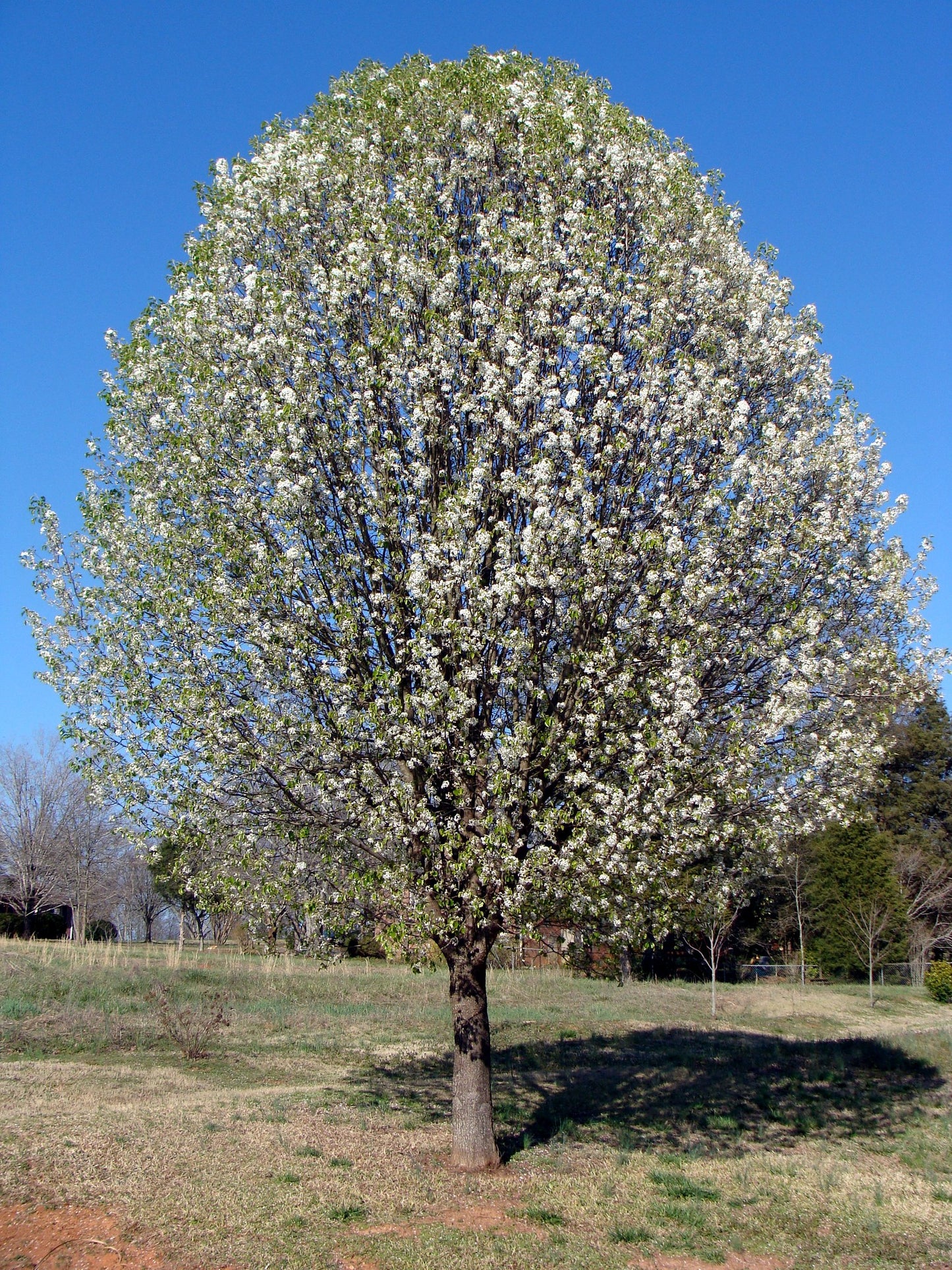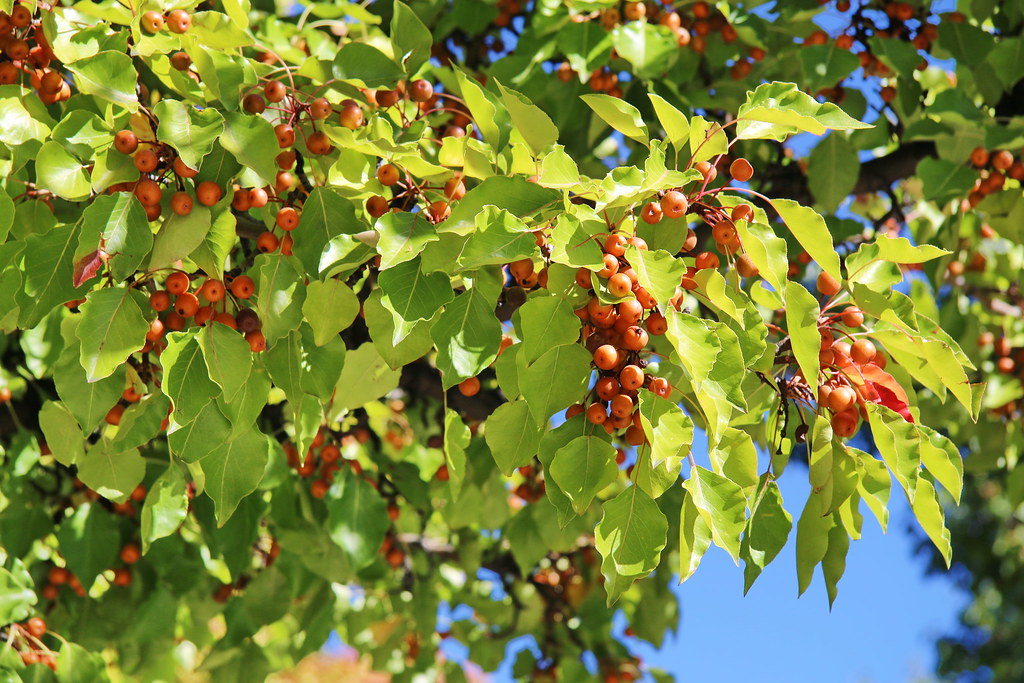Floridaseeds
Callery Pear Pyrus calleryana 100 Seeds USA Company
Callery Pear Pyrus calleryana 100 Seeds USA Company
Couldn't load pickup availability
Pyrus calleryana, commonly known as the Callery pear, is a deciduous tree species native to China and Vietnam. Here's a description of Pyrus calleryana:
Appearance: The Callery pear is a medium-sized tree that typically grows to a height of 30 to 50 feet (9 to 15 meters) with a spread of 20 to 35 feet (6 to 11 meters). It has an upright, pyramidal to oval shape when young, gradually becoming more rounded with age. The bark is grayish-brown and smooth when young, developing shallow furrows and ridges as it matures.
Leaves: The leaves of Pyrus calleryana are alternate, simple, and glossy green, with a slightly wavy margin. They are broadly ovate or elliptical in shape, typically measuring 2 to 3 inches (5 to 7.5 cm) in length. In autumn, the foliage turns vibrant shades of orange, red, and purple before dropping.
Flowers: In early spring, before the leaves emerge, the Callery pear produces an abundance of small, white flowers that are clustered together in dense, corymbose inflorescences. The flowers have a distinctively unpleasant odor, often described as similar to rotting fish.
Fruit: After flowering, Pyrus calleryana develops small, round, green fruit known as pomes. These fruits mature into hard, brownish-yellow or brown fruit that persist on the tree into winter. While the fruit is technically edible, it is not commonly consumed by humans and is considered of poor quality.
Cultivars: Numerous cultivars of Pyrus calleryana have been developed for ornamental purposes, prized for their showy spring flowers, attractive fall foliage, and generally symmetrical growth habit. Some popular cultivars include 'Bradford', 'Chanticleer' (also known as 'Cleveland Select'), and 'Aristocrat'.
Habitat: Pyrus calleryana is adaptable to a wide range of soil types and pH levels, although it prefers moist, well-drained soils. It is commonly cultivated as an ornamental tree in urban and suburban landscapes due to its tolerance of pollution, drought, and compacted soils.
Growing Instructions for the Callery Pear
The seeds have a period of dormancy. They can be planted outdoors in the fall or winter for spring germination or they can be cold stratified to simulate winter conditions and to break their dormancy at any time of the year. 1. Soak the seeds in water for 24 hours. 2. Put the seeds in a ziplock bag. 3. Put the bag in the refrigerator and leave it there for 30 days. 4. The seeds like moist, well-drained soil. Use a sterile seed starter mix, if available. It prevents soil fungi from damaging the seeds and the seedlings. If not available, then make a mixture of half potting soil and half sand, perlite or vermiculite. 5. Put the soil in a pot. 6. Sow the seeds on the soil. 7. Cover the seeds with a layer of soil. 8. Water the soil so that it is moist but not wet. The seeds should start to germinate in 1 to 2 weeks. 9. When the seedlings are 1-2 years old, they can be transplanted.
Materials
Materials
Shipping & Returns
Shipping & Returns
Dimensions
Dimensions
Care Instructions
Care Instructions
Share










